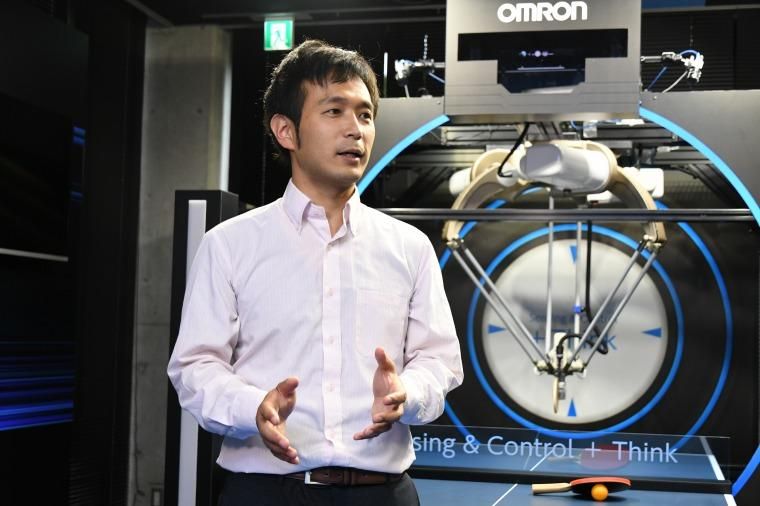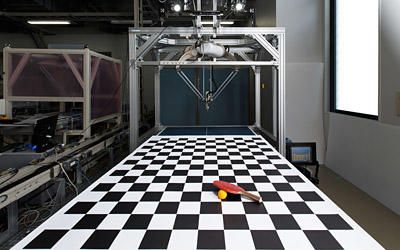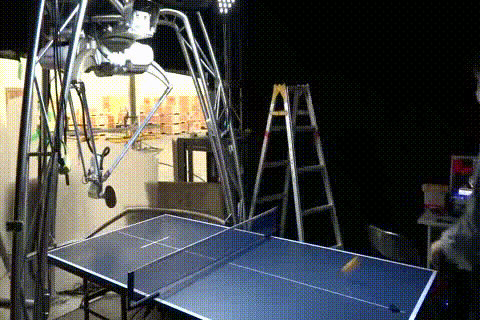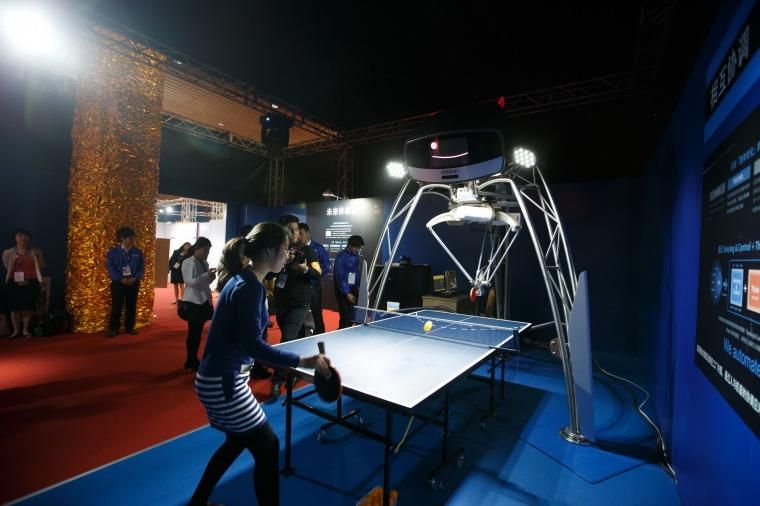Blog post -
History of FORPHEUS's growth ~ From a rallying ping pong robot to entity growing together with humans with AI ~
[Part 1 of 3] Develop a machine that can achieve a goal together with humans in six months!
FORPHEUS evolving year by year as the state-of-the-art technology embodying
"the future when mankind and machines are reconciled".
"Why was it born?" "How will it evolve this year?" The successive development leaders clarify the whole picture.
Offering a sense of reality on the future relationship between humans and machines through one's own experiences.
A ping pong robot born as one that "can achieve a goal together" instead of "competing".
Its start was said to be from practice swings.
Interviewing Shinji Kawakami, as a leader of development of the 1st and 2nd generations
- Please tell us about the background of why FORPHEUS was born

It started at OMRON Total Fair held in China in 2013, a private exhibition introducing our customers to how OMRON group is going to solve social issues in the future.
There was a corner demonstrating the future of OMRON where we were going to exhibit the relationship between humans and machines based on
the SINIC theory of OMRON's future prediction.
The development leader at that time and I were in charge of the theme demonstrating a future where humans and machines work in harmony to achieve a goal.
As OMRON has a wide variety of technologies to operate machines and thus numerous selections to choose from, a wide range of ideas came up.
As we thought that the demonstration should make complex technologies easily understandable and enjoyable for Chinese customers, an idea came up that an acrobatic performance of a robot like China Acrobatic Troupe might be fun. It, however, is not what customers can experience. In the end we chose the theme "ping pong" that enables interaction between humans and machines.
As ping pong is one of the major sports in China, we expected it to be fun for the people there.

It became difficult after choosing the theme ping pong, though.
The exhibition was set to be held in October in Beijing and the schedule could not be changed, of course.
The theme was decided in April. We had less than six months for development.
There were no robots that could play ping pong. OMRON did not develop one. And no other companies did either.
As the robot had to be transported to Beijing, we made demonstration and debugged robots separately, and transported the demonstration version in August.
During transportation, we completed software development with the debugging robot in Japan.
After loading the finished program on the demonstration robot on site, we tried to let the machine play ping pong. Then what happened? The robot's arm came off during a rally! We called it "bone dislocation" as if it was human.
 Through troubleshooting, we found out that its swing differed from the debugged version.
Through troubleshooting, we found out that its swing differed from the debugged version.
Through troubleshooting, we found out that its swing differed from the debugged version.
It was a week before the exhibition.
We repeatedly readjusted the robot in a warehouse in Beijing and made the deadline somehow.
The exhibition was held in various places in China. It was the first step towards having many Chinese people experience OMRON's concept of "harmony between humans and machines" and this experience showed us the next step for the evolution of FORPHEUS.
 The world's first appearance of a ping pong robot in China
The world's first appearance of a ping pong robot in China
The relationship between humans and machines was demonstrated as something that anyone could experience in 2013.
The demonstration was well received all over the world thanks to the novelty of playing ping pong with a human.
Its essence is not the novelty, though. It's the new relationship between humans and machines that will come true in the future.
What will machines become for humans in the future?
What is needed to materialize the future?
Related links
Topics
- Engineering industry
